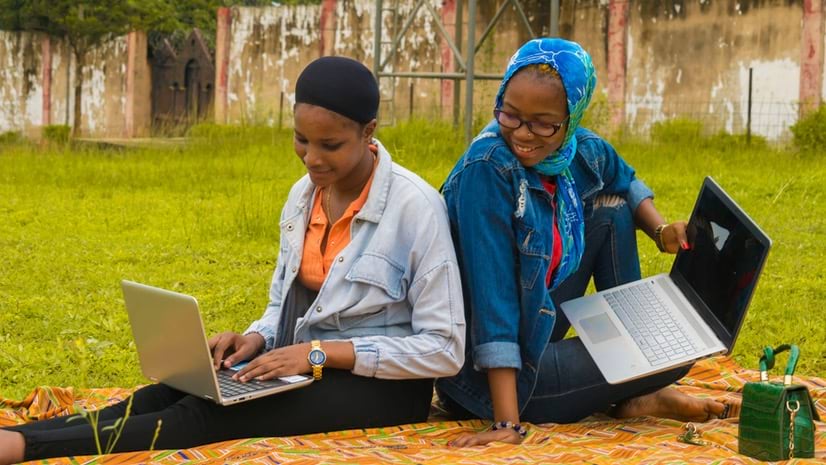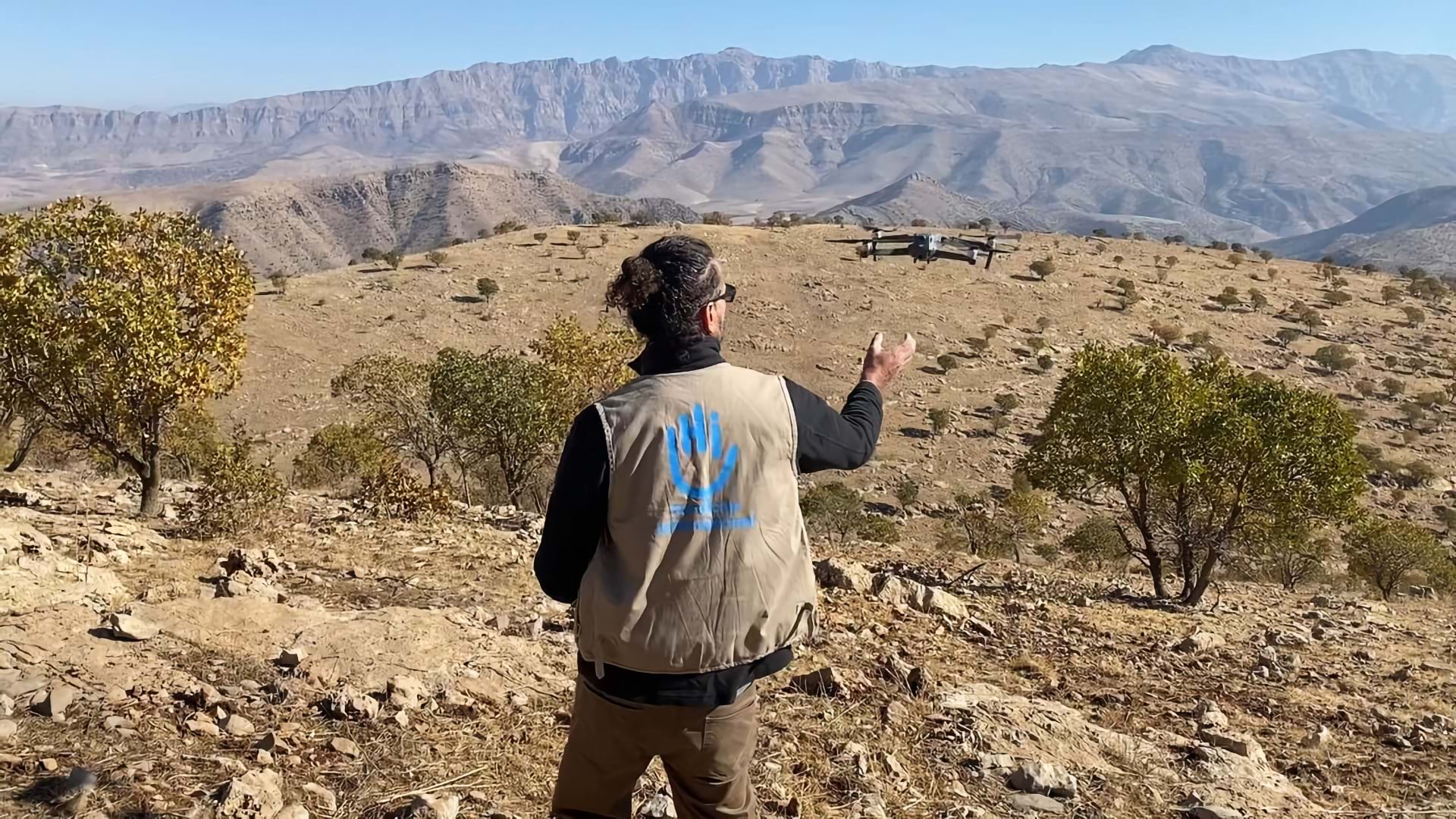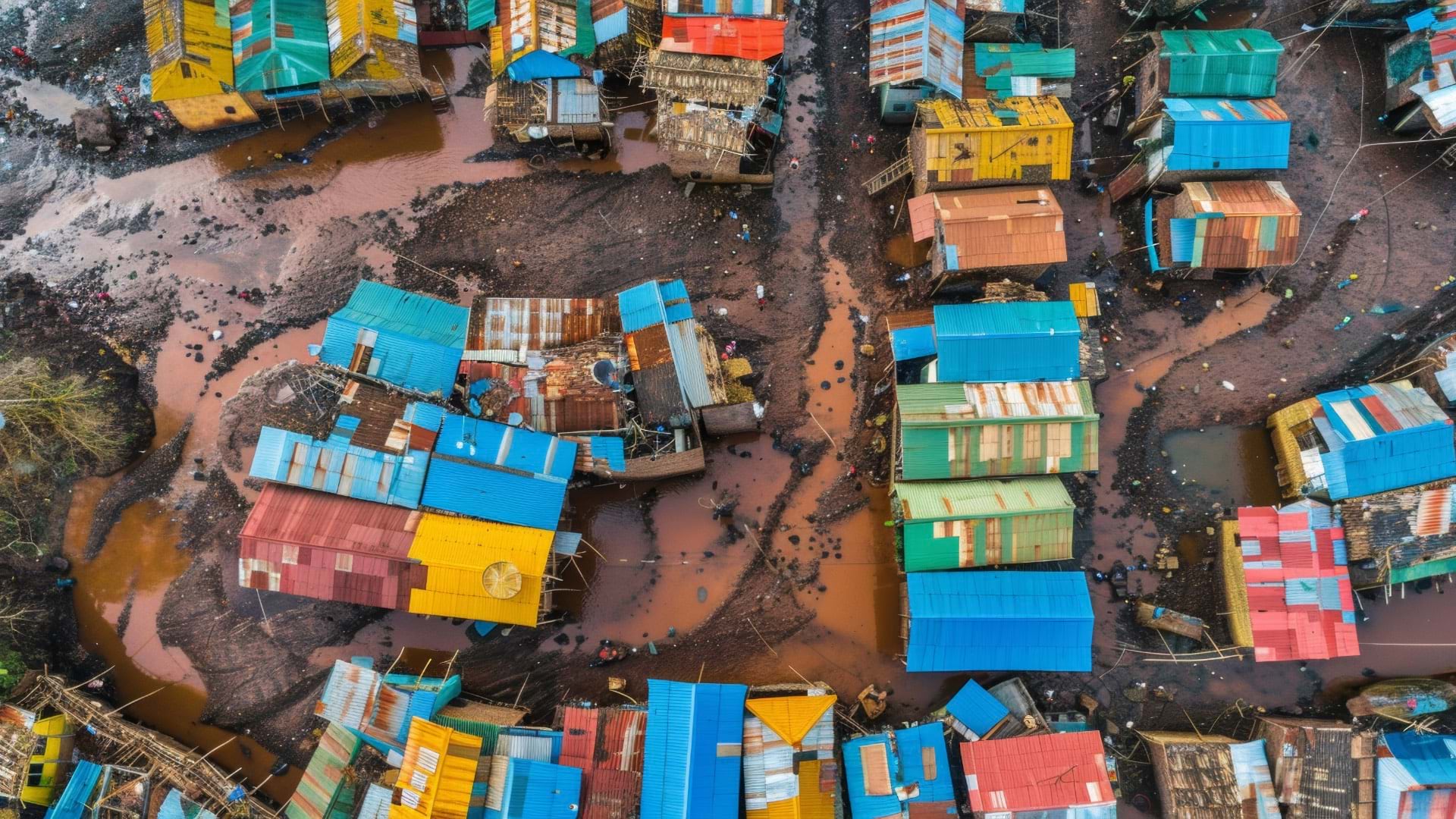

February 11, 2025

As humanitarian organizations rebuild conflict zones across the world, women are taking the lead through geographic information system (GIS) technology. They’re mapping conditions, planning improvements, and measuring impact—all from within their own communities.
While women hold less than 25 percent of digital sector jobs around the globe, the number of women GIS staff in some humanitarian organizations is closer to 40 percent and growing. Expanded GIS training and career development opportunities, particularly in regions with greater societal barriers, have enriched the local talent pool.
Deep-rooted societal norms and gender stereotypes often impede or discourage women from pursuing occupations in science, technology, engineering, and mathematics (STEM) fields.
Ethiopia’s high school dropout rate exacerbates existing gender disparities, particularly impacting girls’ access to education and digital literacy. While information and communication technology (ICT) classes are introduced at the secondary level, only one in four Ethiopian girls reach this stage, leaving many without exposure to digital devices or skills training.
iMMAP Inc. is an international nonprofit organization that provides information management (IM) services to humanitarian and development organizations and is working to bridge these gaps. Through its Ethiopia-based Humanitarian Information Support Team (HIST), iMMAP Inc. offers a range of capacity-building initiatives, including self-paced courses, instructor-led training, and webinars covering essential IM skills and tools such as GIS for data visualization and analysis. The HIST operates regionally from its main office in Addis Ababa, with dedicated colleagues also working in the Amhara, Somali, and Tigray regions.
“The information management sector in Ethiopia is highly male dominated,” said Geke Kieft, iMMAP Inc.’s country representative in Ethiopia. To address this, iMMAP Inc. is committed to increasing women’s representation in its programs, particularly its immersive six-month internship program, launched in partnership with Addis Ababa University. The program provides recent graduates hands-on experience applying GIS and remote sensing skills to projects within the humanitarian sector.
Kieft emphasizes iMMAP Inc.’s dedication to encouraging women and future leaders in IM: “We are committed to providing these opportunities for women and the younger generation to develop critical IM skills and become leaders in their field.” This focus on practical, long-term experience and leadership development aims to empower women within the IM sector.
The iMMAP Inc. internship program in Ethiopia builds upon the success of a similar internship program in Nigeria, which recently celebrated its fourth year. In January 2024, 14 interns completed the intensive two-month program in northeast Nigeria. Both programs provide invaluable practical experience, mentorship, and networking opportunities within the humanitarian technology sector.
“Our partnership with Addis Ababa University is vital to iMMAP Inc.’s mission of empowering women in STEM disciplines, particularly in information management,” said William Barron, CEO of iMMAP Inc. “This initiative provides talented graduates with practical experience, positioning them to become leaders in the sector, and contributes to the broader goal of advancing gender equality in Ethiopia.”
Masresha Anwar and Tsion Taye were the first two interns to complete the six-month iMMAP Ethiopia internship program. Both women had recently graduated with a Master of Science in Remote Sensing and Geoinformatics.
Geoinformatics and GIS are central to the services iMMAP provides to achieve its tagline of: “Better Data. Better Decisions. Better Outcomes.” The interns underwent a rigorous onboarding process and were given specific job objectives and tasks tailored to their interests and skill levels. Anwar and Taye engaged in data collection, spatial analysis, and map-based visualization.
“The internship allowed me to interact with different types of data and analytical methodologies,” Anwar said. “And learn more about information management issues.”
Recognizing that the internship alone might not fully equip graduates for the competitive regional STEM job market, Kieft and her team successfully advocated for two new IM assistant positions within iMMAP Inc. Ethiopia. Following a competitive interview process, both Anwar and Taye were hired.
“We’re developing a robust succession plan here in Ethiopia,” Kieft explained. “The goal is to create a pathway for individuals to progress from intern to junior staff, then on to senior officer or management roles. That’s the long-term trajectory we envision for them.”
About 95 percent of the workforce of The HALO Trust—the world’s largest humanitarian land mine clearance organization—is composed of local staff. In war-torn regions, HALO is often one of the largest employers. The work is not only labor-intensive, but it benefits from having staff with local knowledge of the landscape.
HALO trains its workforce in technologies required for finding and clearing land mines so that communities can rebound from conflict more quickly. Teams are using GIS for the full demining workflow, from delineating the boundaries of suspected minefields, to creating detailed maps of where mines were removed so that the land can be returned to communities.
“Our connection with the local communities makes it work, and it’s important that the technology is flexible so they can find the best way to make it work for them,” said Jesse Hamlin, senior GIS officer at HALO Trust. “This is where Esri’s ArcGIS Enterprise suite and Trimble’s advanced GNSS receivers make a big difference.”
The job of demining used to be considered “men’s work” but more and more women are joining the effort. In countries such as Somalia, where women have fewer freedoms, 30 percent of the HALO deminers are women. Since Somalia is a very clan-oriented society, women can work in certain areas that men cannot if they are from one of the local clans. In Sri Lanka, where the world’s first female head of state was elected in 1960, women comprise half of the demining workforce, and many women are in leadership roles.
HALO Trust launched the “Women in GIS for Demining” initiative in March 2024, with support from the Trimble Foundation. The three-year project will train 11 women across seven countries who will in turn train deminers on the tools of the trade.
Women in Ukraine, Yemen, Zimbabwe, and Sri Lanka are currently supporting more than 2,400 field staff, teaching them how to use Trimble GNSS equipment as well as the GIS mobile workforce and data collection apps ArcGIS Field Maps and ArcGIS Survey123.
In Zimbabwe, a woman named Delight Manyange started working as a deminer in her early 20s, and helped clear the mines around her school. She was trained as a GIS specialist after showing acumen with the tools. “She recently went back to her village to support her colleagues to map the land they’ve cleared,” Hamlin said.
In HALO’s office in Somalia, Khadiijo Ahmed leads the information management department. Starting as a data clerk in the finance department, she became a GIS technician, then a GIS analyst, and was promoted to GIS manager. She has since hired other local women to assist her in working with GIS and other enterprise software.
In the GIS specialty, 40 percent of The HALO Trust’s workers are women. This is higher than the roughly 20 percent for women deminers globally because in countries where HALO operates there are often limits on women working in the field. “GIS is a safe space where women can contribute and make a difference and not have to worry about being judged,” Hamlin said. This tracks with the organization’s commitment to providing new opportunities and its long-term vision that every person they train will spread the power of GIS technology.
“Many of the people we have trained in GIS come from remote villages but now work for the government and are training other people on the technology,” Hamlin said. “They will become the leaders of tomorrow.”
Learn more about how GIS helps nongovernmental organizations prepare, manage, and deliver effective humanitarian assistance.


